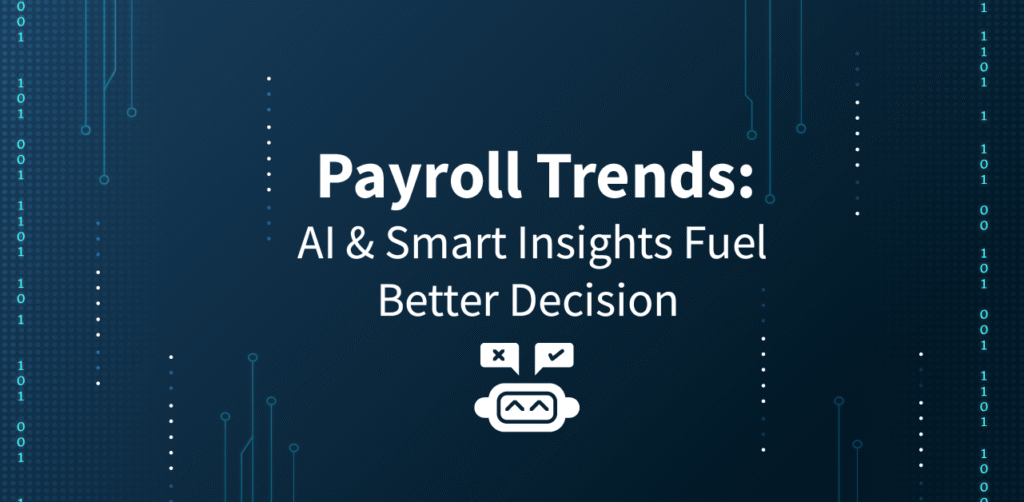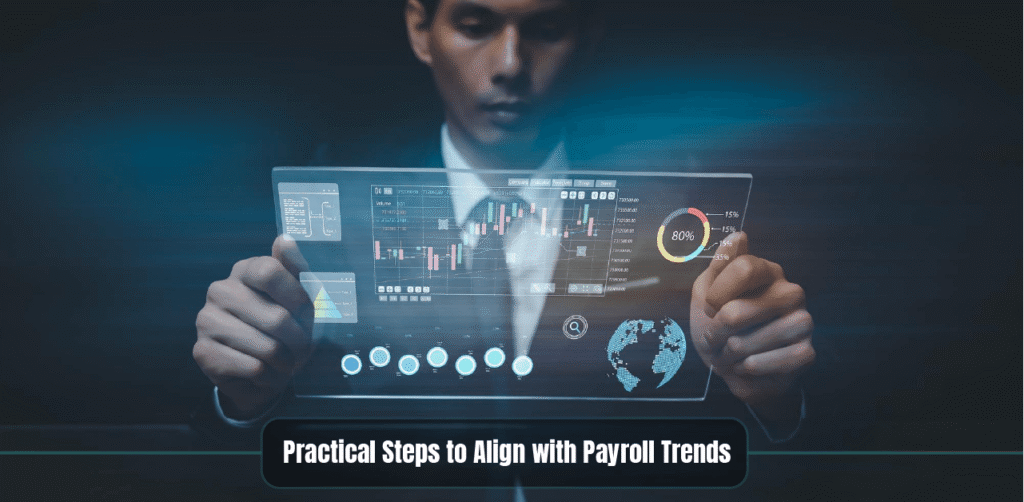Payroll trends in 2025 are shaping more than just how companies pay their international teams they’re redefining how businesses stay compliant, competitive, and resilient in a world that never stands still.
As labor markets evolve rapidly, globalization intensifies, and compliance costs soar, Employer of Record (EOR) and Agent/Authorizer of Record (AOR) service providers have emerged as critical strategic partners. These providers are helping businesses simplify payroll and workforce management across borders navigating complexities of culture, regulation, and geography with confidence.
This blog unravels the most significant payroll trends to be aware of in 2025, which can give the business executives, human resource professionals, and growth-oriented organizations the knowledge they need to step into uncharted territories without fear.
KEY TAKEAWAYS
Payroll is not check cutting. By 2025, payroll will be one of the determinants of employee happiness, brand confidence, and business strength. Why? This is because the employees are more demanding nowadays since they demand on time and transparent remuneration, proper handling of taxes, and might have better communication. And regulators are calling for more, as well tougher auditing rules, tighter classification rules, and changing wage laws.
Payroll Trends are feeding on these forces, and every employer should be on the lookout on how to make their practices smarter when it comes to compliance as well as how to incorporate the payroll functions more closely to the HR and finance processes.
Below are the Payroll Trends that are shaping the near future along with practical takeaways for businesses that want to stay ahead.
Among the Payroll Trends of 2025, the transition into strategic compliance anchor payroll is considered to be one of its most profound ones. The laws of labor are getting disintegrated and tangled at the global level, as additional numbers of states and countries tweak wage and hour regulations, establish pay transparency requirements, and create stricter misclassification penalties.
Companies can no longer treat payroll as merely an operational function. Today’s payroll teams play a critical role in ensuring compliance from adapting to minimum wage adjustments to managing statutory leave entitlements helping organizations stay ahead in a constantly evolving regulatory landscape.
The question is what to do:
The emergence of the employee experience becoming a priority to payroll is one other Payroll Trend in 2025. The employees want the payroll to be:
Delayed payments and unclear or incorrect deductions can quickly erode employee trust. In today’s competitive labor market, even small payroll frustrations can lead to talent loss making accurate, transparent, and timely payroll more critical than ever.
What’s changing?
Organizations are increasingly prioritizing clear communication around pay from easy-to-read pay slips and responsive help desks to transparent explanations of deductions.
What to do:

AI is not just automating repetitive payroll tasks it’s uncovering valuable insights that might be missed by human eyes. One of the key payroll trends of 2025 is the growing role of AI and data analytics in supporting payroll teams. From flagging errors and spotting anomalies to predicting future liabilities, AI is becoming an essential tool for proactive and intelligent payroll management.
Organizations that invest in AI-based anomaly detection will be able to detect duplicate payments, tax errors that seem suspicious to the overtime claims before they stick and cost the company.
What now:
With businesses going multinational, outsourcing employees in various countries, Payroll Trends in 2025 are moving towards the direction of a strong cross border pay practice.
Compensation of International employees is an additional complication of taxation, payment in foreign currency, and varying expectations of benefits.
Though tech tools ease the matters, the mastering of these requirements is achieved by the experience of the payroll team who helps keep business compliant among the many jurisdictions.
What to do:
The latest emerging Payroll Trend is in flexibility required by the employees and mostly their pay patterns as well as timing of payment.
There is increased popularity of the earned wage access (EWA) or on-demand pay or flexible payday options. This is not a trend of technology only, rather of policy and practice change to promote employee financial wellness.
What should be done:
As we have seen the increase in data breaches and cybersecurity threat, Payroll Trends in 2025 emphasize the value of data security. The payroll departments deal with huge volumes of sensitive data about employees, including bank accounts, tax identification numbers, etc. Violation of all of them may cause legal problems and a loss of image.
What to do:
The era of silo payroll is gone. The Payroll Trend in 2025 is closer integration with both the HR and finance teams. The teamwork assists in streamlining such activities as the onboarding process, benefits enrollment, and offboarding process- ensuring that payments, taxes, and benefits are done properly.
What should be done:
The tax departments and labor departments are intensifying their scrutiny. Audit readiness is not a possibility nowadays, but it is a necessity. The companies which view it as a long-term process, rather than a last-minute rush, will be in the best position to minimize the fines.
What do you do:

This is an effective checklist to have your payroll operation ahead of it:
Amid the rise of automation and AI in payroll, the human element must not be overlooked. Employees want to feel that their pay is managed by knowledgeable, empathetic professionals not faceless systems or disengaged administrators.
To keep pace with new laws and good practices payroll teams require appropriate training, upskilling and leadership support.
Trick: Incentivize knowledge sharing platforms to keep payroll pros at the top of local law and global standards.
Change in the global economy, increasing labor law, and remote working are among factors affecting Payroll Trends. The following are some of the challenges that most businesses will encounter in 2025:
Proactive companies stay dynamic and agile by continuously monitoring global developments and swiftly adapting their policies to stay compliant and competitive.
Ultimately, payroll trends come down to one word: trust. Employees place their trust in the process when there are no errors, no delays, and no confusion. An effective payroll system delivers accuracy, timeliness, and transparency building employee loyalty and protecting the reputation of your organization.
To end, let us go with a final checklist that helps you organize your payroll work in accordance with the most significant Payroll Trends:
Payroll is more than just numbers it’s the foundation of trust between an organization and its people. The payroll trends shaping 2025 reveal that organizations leading the way are those that adapt quickly, ensure compliance, and put people at the center of their payroll strategies.
We know the challenges that are involved when keeping payroll in the realm of the modern world. Our compliance expertise to the workforce intelligence, we provide businesses the confidence to navigate to the ever changing trends in payroll.
It is not just a solution when you join TekWissen as a partner, it is a business relationship with a partner who earns your trust because he/she promises to deliver solutions that will help you align your payroll operations to the best practices, emerging regulations as well as expectations of your people.
Stay ahead. Stay compliant. And have your workforce motivated and assured and get TekWissen to work with you.
Elevate your hiring process with Skill-Based Hiring, reducing bias, optimizing workforce planning, and empowering organizations for future-ready
success.
Explore how GCCs evolved from outsourcing to drive innovation. Discover the key differences between in-house global capability centers and traditional models.
Upskilling and reskilling strategies for global capability centers (GCCs). Optimize talent, drive innovation, and build a future-ready workforce in GCCs.